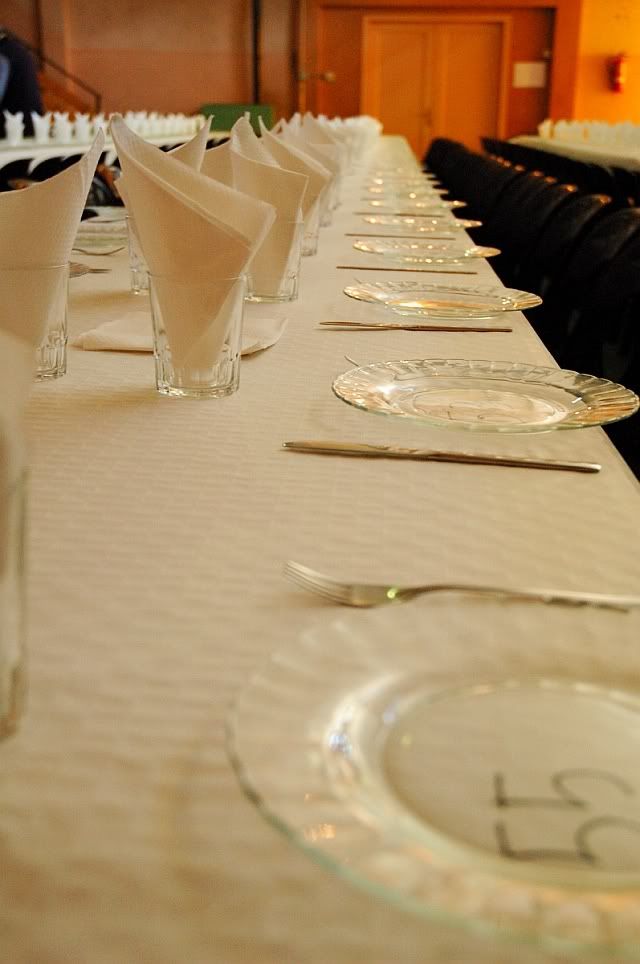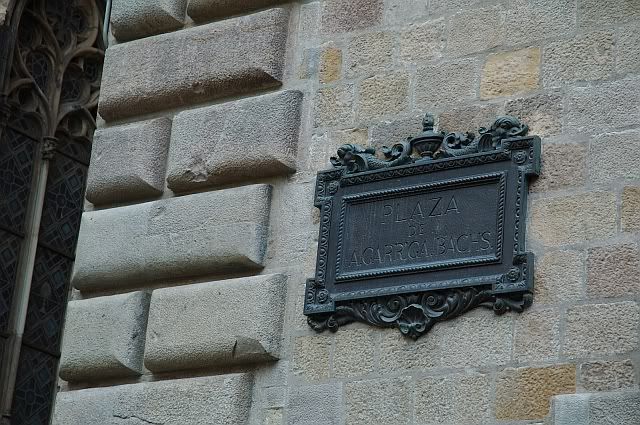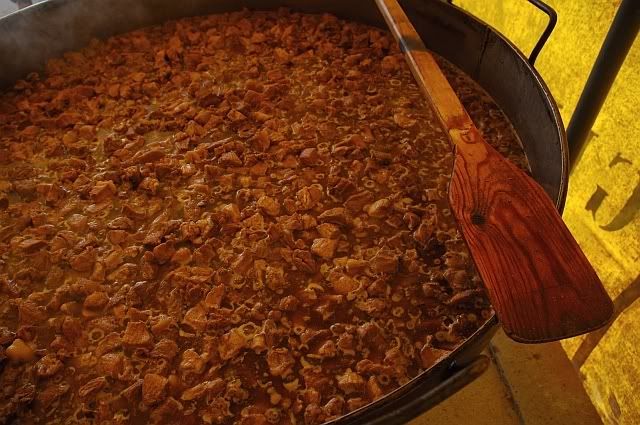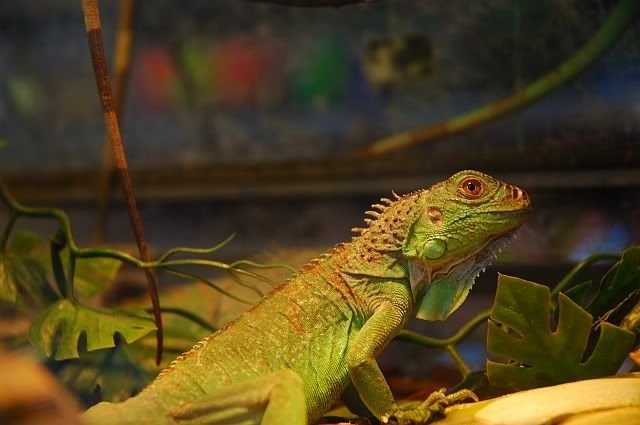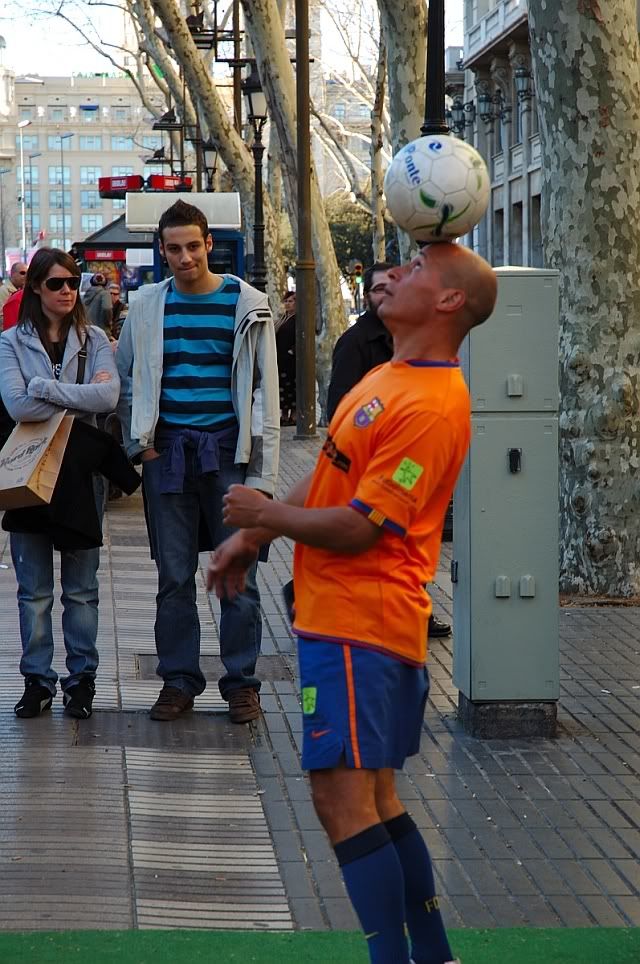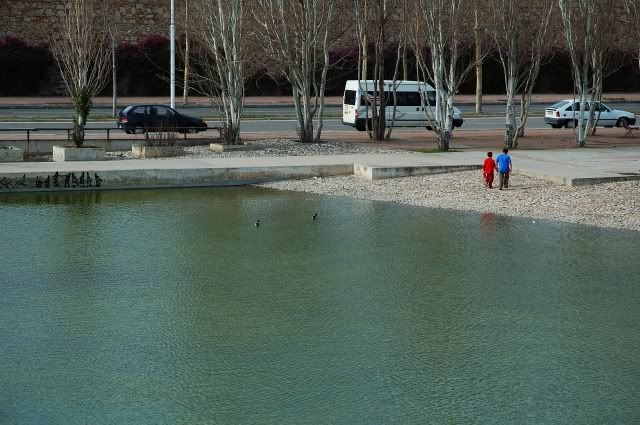Barcelona photos: Daily photographs of Barcelona, Spain. Pictures of a modern city with travel tips in a personal photoblog. A photography and travel site. Art, architecture, people and traditions. Travel to Barcelona through my camera, know more about our city and towns nearby. Welcome!
Wanna be featured?
May 17, 2008
May 16, 2008
Cirque du Soleil - Alegria
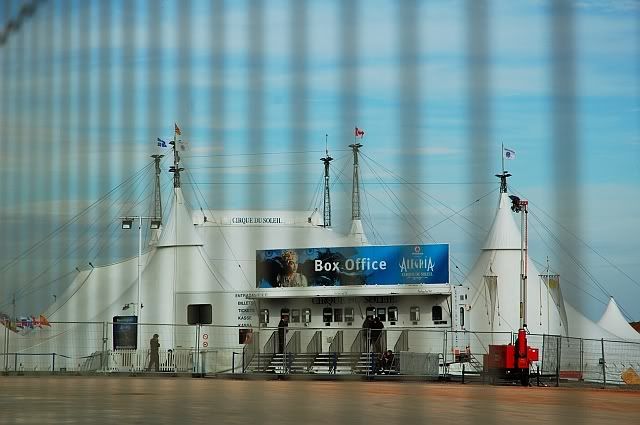
Alegria: A Mesmerizing Journey into the Enchanting World of Cirque du Soleil
Cirque du Soleil, renowned for its breathtaking acrobatics, stunning visuals, and awe-inspiring performances, has captivated audiences worldwide for decades. Among its many captivating shows, Alegria stands out as a timeless masterpiece that combines artistic prowess, theatrical storytelling, and unparalleled acrobatic feats.
In this article, we will delve into the magical world of Alegria and explore the mesmerizing experience that has enchanted audiences for years.
Unveiling Alegria:
Alegria, which means "joy" in Spanish, is a Cirque du Soleil production that made its debut in 1994. Created by director Franco Dragone, the show has been performed across the globe, captivating millions with its unique blend of circus arts, theater, and music. Alegria tells a captivating story that explores the human condition, the struggle between power and weakness, and the eternal quest for happiness.
Storyline and Themes:
Set in a whimsical, dreamlike universe, Alegria takes the audience on a journey through a fantastical realm inhabited by a cast of extraordinary characters. The show's narrative revolves around the character of the Innocent, who embarks on a quest for self-discovery and seeks to reclaim the essence of joy that has been lost in a world dominated by power and corruption. Throughout the performance, Alegria explores timeless themes such as love, power, transformation, and the triumph of the human spirit.
Acrobatics and Artistry:
At the heart of Alegria lies Cirque du Soleil's signature acrobatic prowess. The show features a remarkable ensemble of world-class performers, each exhibiting exceptional strength, agility, and precision. From breathtaking aerial acrobatics to gravity-defying contortionists, the artists push the boundaries of human capability, leaving audiences in a state of sheer wonder and amazement. Alegria's choreography seamlessly blends acrobatics with dance, creating a visually stunning display of artistry that leaves a lasting impression.
Spectacular Visuals and Soundscapes:
In true Cirque du Soleil fashion, Alegria boasts a mesmerizing visual spectacle. Elaborate costumes, vivid sets, and imaginative props transport the audience into a vibrant and surreal world. The show's design reflects a fusion of historical influences, contemporary aesthetics, and whimsical flair, immersing spectators in an otherworldly experience. Complementing the visual feast is a rich musical score composed by René Dupéré, featuring a mix of haunting melodies and high-energy rhythms that perfectly enhance the emotional depth of the performance.
Legacy and Impact:
Alegria's impact on the world of entertainment cannot be overstated. The show has been seen by millions of people across the globe, earning critical acclaim and numerous awards. Its success paved the way for Cirque du Soleil's continued evolution and expansion, firmly establishing the company as a trailblazer in the realm of circus arts and live performances. Alegria's timeless themes and artistic brilliance have resonated with audiences of all ages and backgrounds, leaving a lasting impression and a sense of joy that transcends cultural boundaries.
Alegria stands as a testament to the innovative and transformative power of Cirque du Soleil. Through its captivating story, awe-inspiring acrobatics, and spellbinding visuals, the show takes audiences on an enchanting journey that leaves them inspired, moved, and filled with a renewed sense of wonder. Alegria's enduring legacy serves as a reminder of the profound impact that art and creativity can have on our lives, inviting us to embrace the joy and magic that can be found in the extraordinary.
May 15, 2008
May 14, 2008
May 13, 2008
May 12, 2008
May 11, 2008
Sardana Dancers

Dancing in front of Barcelona Cathedral is traditional in Barcelona. This kind of folk dance is called Sardana.
May 10, 2008
Sardanas at Barcelona Cathedral
May 09, 2008
May 08, 2008
May 07, 2008
May 06, 2008
May 05, 2008
May 04, 2008
May 03, 2008
May 02, 2008
May 01, 2008
Tango Dancers II, Ramblas, Barcelona, Spain
I am not too talkative today and besides an image sometimes speaks for itself. You all know what tango is. I only have to say that you can watch dancers like this couple at Las Ramblas in Barcelona. By the way this is the second time they appear in my blog, see the previous snap which is very similar although less contrasty: Tango Dancers in Las Ramblas I
April 30, 2008
Holy Water Font or Basin Made With Shell, Colonia Guell's Crypt, Barcelona, Spain
![Holy Water Font or Basin Made With Shell, Colonia Guell's Crypt, Barcelona, Spain [enlarge]](https://i63.photobucket.com/albums/h135/carloslorenzo/Holy_Water_Font-Shell_.jpg)
Stationary fonts like this are placed at the entrance to churches as you all know but I am sure you never saw a holy water font made with an enormous shell nor have you seen perhaps such wonderful ironwork pedicle. Nothing is common and ordinary when you enter Gaudi's crypt at Colonia Guell. The place has columns, altar, stain glass and pews as any other church but you have to be prepared to digest the degree of variation of the holy elements. A church was supposed to be on top of the crypt, as the latter was part of a bigger project which started in 1908. In 1917 one year after Gaudi's art patron and friend, Eusebi Guell, died, the work was finally stopped. As you can guess foundations are very solid. Columns are made of basaltic rock and different kinds of bricks. The ceiling is vaulted in the most traditional gothic style. Every arch, every pillar, was precisely calculated with small sacks full of pellets which were tied to the ceiling in Gaudi's workshop by means of small pieces of cloth and string making up what is known as a stereostatic model. The weight of every sack was proportional to the load every arch element had to hold. But everything here is hard to imagine without visiting Colonia Güell of course. By the way, there were some posts in Barcelona Photoblog some time ago that might help: Caprice Supreme of Architecture, Modernist Door and Mosaic, Futurist Windows and Stained Glass
April 29, 2008
Colorful Bolivian Tinted Feather Hat, Moll de la Fusta, Barcelona, Spain
At Moll de la Fusta (Barcelona Port, Spain), there are these occasional parties organized by interracial non-profit agencies that we city dwellers tend to visit out of pure curiousity at first and enthusiastically once you get addicted to. There's the usual inexpensive exotic food offer which in many cases is the luring part of it believe me, at least for many people, let's not be hypocritical, and then there's the leisure side, particularly for parents who can't find a better place to take their kids that really satisfies them both and finally there's the integration side which originally was supposed to be the first one. At least this is the way I see it although "committed" citizens might openly disagree. Wouldn't it be better to give immigrants other kinds of opportunities rather than selling feather hats they don't wear anymore, I mean this is like selling tomahawks and rabbit paws. You have to say that the hat is beautiful and that unfortunately many people in the world have to sell traditions as if they were souvenirs for a living. I don't mean to be radical, of course, there are many color shades as in the hat.
April 28, 2008
Rambla de Mar Lightweight Bridge, Barcelona, Spain
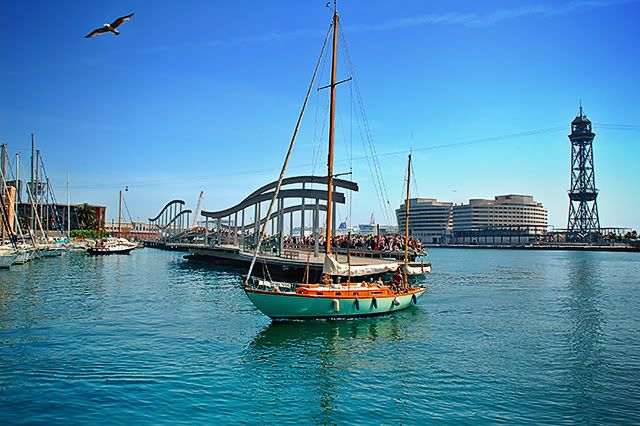
Witnessed by the anxious crowd gathering on the Rambla de Mar lightweight bridge close to Maremagnum shopping center, gently sails this boat, stopping time for some minutes and forcing visitors to enjoy the view longer than expected, till the mechanism in the bridge extends the wooden platform towards the pier on the other side. The bridge by Viaplana and Pinion leads to Las Ramblas nearby and was featured in Barcelona Photoblog in the past: Waiting for the Bridge at Rambla de Mar and Maremagnum Wooden Bridge in Rush Hours.
And just in case you would like to enjoy the same view daily here is list of Barcelona hotels near the port:
Subscribe to:
Posts (Atom)
Labels
architecture
(164)
modernisme
(82)
art nouveau
(74)
gaudi
(74)
food
(67)
flowers
(63)
street artist
(55)
sculpture
(48)
barri gotic
(39)
las ramblas
(39)
sagrada familia
(33)
dancers
(29)
beach
(28)
amusement park
(27)
port
(27)
human statue
(26)
art
(25)
mosaic
(25)
tibidabo
(25)
guell
(23)
sant pau
(23)
barcelona streets
(22)
tips
(22)
Catalan traditions
(21)
barcelona shop
(21)
market
(21)
montjuic
(21)
gothic quarter
(19)
domenech i montaner
(18)
la boqueria market
(18)
opinion
(18)
carnival
(17)
christmas
(17)
costa brava
(17)
ciutadella
(16)
maremagnum
(16)
folklore
(15)
classic
(14)
balcony
(13)
modernist
(13)
sea
(13)
street art
(13)
barcelona hotels
(12)
catalan art nouveau
(12)
catalan towns
(12)
costumes
(12)
graffiti
(12)
la pedrera
(12)
stained glass
(12)
casa mila
(11)
casa modernista
(11)
door
(11)
fountain
(11)
history
(11)
barcelona market
(10)
ceiling
(10)
la rambla
(10)
barcelona port
(9)
bikes
(9)
chocolate
(9)
crafts
(9)
paper mache
(9)
pedralbes
(9)
port aventura
(9)
vintage
(9)
architects
(8)
cosmocaixa
(8)
harbor
(8)
hotel
(8)
motorbike
(8)
passeig de gracia
(8)
arc de triomf
(7)
classic cars
(7)
dali
(7)
gracia
(4)
palau de la musica
(4)
accommodation
(3)
barcelona bar
(3)
casa batllo
(2)
cheese
(2)
cruises
(2)
gracia quarter
(2)
ham
(2)
wine
(2)
hostel
(1)
parc guell
(1)
picasso
(1)
